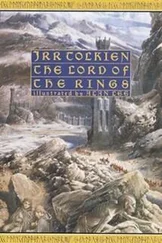The op looked to be heading for a disastrous failure, and the bouncing bombs’ designer, Barnes Wallis, waiting in the operations room back in England – the basement of a large house on the outskirts of Grantham – was almost beside himself as the succession of coded signals came through, announcing the failure of each bomb-run. He had tested his original concept by bouncing his daughter’s marbles across a tub of water, and had endured obstruction and ridicule before his ideas were accepted, but three bombs had already failed, and now the fourth bomb had also been dropped, once more without apparent effect.
Gibson now called up David Maltby, just twenty-three and, like Mick Martin, already the holder of the DFC and DSO. He was the fifth to make his approach, flying in at 60 feet above the water, with Gibson and Martin both acting as decoys to draw off some of the anti-aircraft fire. They even switched on their navigation lights to distract the flak-gunners, while their own forward gunners poured fire into the enemy positions, but although the raiders did not know this, all the anti-aircraft guns had now been put out of action and the gunners could only fire rifles at the Lancaster roaring across the lake towards them.
As he skimmed the surface of the water, his attention focused on the massive grey wall spanning the gap between the two towers, Maltby suddenly realised that the crest of the parapet was beginning to change shape. A crack had appeared, growing wider and deeper by the second as a section of masonry began to crumble and pieces of debris tumbled into the water. Close to his own bomb-release point, Maltby realised that Dinghy Young’s bomb had made a small breach in the dam which was already beginning to fail.
As a result, Maltby veered slightly to port to target a different section of the dam just as his bomb-aimer dropped the Upkeep bomb. It was released perfectly, bouncing four times, before striking the dam wall and then sinking below the surface right against the dam face. Moments after Maltby’s aircraft passed over the parapet, the bomb erupted in a huge column of water mixed with silt and fragments of rock.
It was still not clear at first if even this bomb had actually breached the dam, and, moments later, Barnes Wallis and the others listening in the operations room in England heard the terse radio signal: ‘Goner 78A’. ‘Goner’ meant a successful attack, ‘7’ signified an explosion in contact with the dam, ‘8’ no apparent breach, and ‘A’ showed the target was the Möhne dam.
However, as the debris from the waterspout spattered down, Maltby could see that the dam – its masonry fatally weakened by the repeated bomb-blasts – was now crumbling under the monstrous weight of water it held, and as the raiders watched, the breach gaped wider. The torrent pouring through the ever-growing gap, dragging the anti-torpedo nets with it, hastened the Möhne dam’s complete destruction. As it collapsed, widening into a breach almost 250 feet across, a wall of water began roaring down the valley, a tide of destruction sweeping away villages and towns in its path. Tragically, among the countless buildings destroyed were the wooden barrack blocks housing hundreds of East European women that the Nazis had compelled to work as forced labourers. Almost all of them were drowned, and they formed by far the largest part of the 1,249 people killed by the raid, one of the highest death tolls from a Bomber Command operation at that time.
Maltby sent a one-word radio transmission: the name of Gibson’s black Labrador dog, which told all those waiting in the operations room that the Möhne dam was no more. Air Marshal Arthur Harris, the head of Bomber Command, turned to Barnes Wallis, shook his hand and said, ‘Wallis, I didn’t believe a word you said when you came to see me. But now you could sell me a pink elephant.’ 6
Gibson told Maltby and Martin, who had both used their bombs and sustained flak damage, to turn for home, while he, old Etonian Henry Maudslay, the baby-faced Australian David Shannon – only twenty, but another pilot who was already the holder of the DSO and DFC – and yet another Australian, twenty-two-year-old Les Knight, who ‘never smoked, drank or chased girls’, 7making him practically unique in 617 Squadron on all three counts, flew on to attack the next target, the Eder dam. Thirteen storeys high, it was virtually unprotected by flak batteries, since the Germans believed that its position in a narrow, precipitous and twisting valley made it invulnerable to attack.
The approach was terrifying, a gut-wrenching plunge down the steep rocky walls of the valley to reach the surface of the lake, leaving just seven seconds to level out and adjust height, track and speed before releasing the bomb. Shannon and Maudslay made repeated aborted approaches to the dam before, at 01.39 that morning, Shannon’s bomb-aimer finally released the Upkeep bomb. Shannon’s angle of approach sent the bomb well to the right of the centre of the dam wall, but it detonated successfully and he was convinced that a small breach had been made.
Maudslay was next. Guy Gibson later described him pulling up sharply and then resuming his bomb-run, and other witnesses spoke of something projecting from the bottom of his aircraft, suggesting either flak damage or debris from a collision with the tops of the trees on the lake shore. Whatever the cause, Maudslay’s bomb was released so late that it struck the dam wall without touching the water and detonated immediately, just as Maudslay was overflying the parapet. The blast wave battered the aircraft, and although Maudslay managed to give the coded message that his bomb had been dropped, nothing more was heard from him or his crew. He attempted to nurse his crippled aircraft back to England but was shot down by flak batteries on the banks of the Rhine near the German-Dutch border. The Lancaster crashed in flames in a meadow, killing Maudslay and all the other members of his crew.
Knight now began his bomb-run. Like Shannon, he made his approach over the shoulder of a hill, then made a sharp turn to port, diving down to 60 feet above the water, counted down by his navigator who was watching the twin discs of light thrown onto the black water by spotlights fitted beneath the fuselage, waiting until they converged into a figure ‘8’ that showed they were at exactly the right height. Knight’s bomb – the third to be dropped, and the last one the first wave possessed – released perfectly, hit the dam wall and sank before detonating. The blast drilled a hole straight through the dam wall, marked at once by a ferocious jet of water bursting from the downstream face of the dam. A moment later the masonry above it crumbled and collapsed, causing a deep V-shaped breach that released a tsunami-like wall of 200 million tons of water.
The remaining aircraft of the second and third waves were now making for the third and last target of the night, the Sorpe dam. It was of different construction from the other two – a massive, sloping earth and clay mound with a thin concrete core, rather than a sheer masonry wall – making it a much less suitable target for Wallis’s bouncing bombs. Pilot Officer Joe McCarthy, a twenty-three-year-old New Yorker, was the only pilot of the second wave of five aircraft to reach the dam. Pilot Officer Geoff Rice had hit the sea near Vlieland, tearing his Upkeep bomb from its mounting and forcing him to abort the op and return to base. Like Astell, Flight Lieutenant Bob Barlow had collided with some electricity pylons, killing himself and all his crew, and Pilot Officer Vernon Byers had been hit by flak over the Dutch island of Texel. His aircraft crashed in flames, killing all seven men aboard.
New Zealander Les Munro was also hit by flak as he crossed the Dutch coast. As he reached his turning point approaching the island of Vlieland, he could see the breakers ahead and the sand dunes rising above the level of the sea, and gained a little height to clear them. He was, he recalled, flying ‘pretty low, about thirty or forty feet, and I had actually cleared the top of the dunes and was losing height on the other side when a line of tracer appeared on the port side and we were hit by one shell amidships. It cut all the communication and electrical systems and everything went dead. The flak was only momentary, we were past it in seconds, but one lucky or unlucky hit – lucky it didn’t kill anyone, or do any fatal damage to us or the aircraft, but unlucky that one shot ensured we couldn’t complete the op we’d trained so long for’ – had forced them to abort the op and turn for home.
Читать дальше












